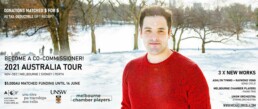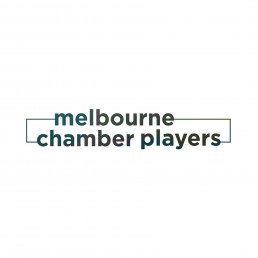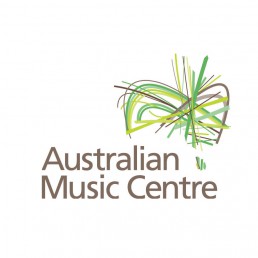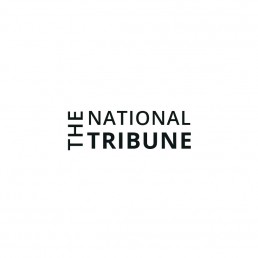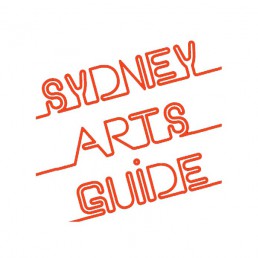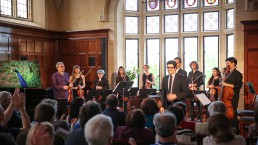2021 Australia Tour
As a composer, my work is about finding beauty in the world and helping others do the same.
In 2022, I want to bring my work home.
2022 Australia Tour
Commissioning Campaign
$6,221/ $5,000 AU
Amount Raised from Round 1 Public Crowdfunding Campaign
$5,000/ $5,000 AU
Creative Partnerships Australia Matched Funding Secured
$3800/ $5,000 AU
Amount Raised from Round 2 Private Funding Campaign
$15021/ $15,000 AU
Total Project Funding
Donations processed through Australian Cultural Fund are tax-deductible gifts for Australian tax residents!
Donations processed through Fractured Atlas are tax-deductible gifts for U.S. tax residents!
The Commissioning Campaign
Donations processed through Australian Cultural Fund are both tax-deductible gifts and matched dollar for dollar for Australian tax residents!
$1260/ $5,000 AU
Amount Raised
$1260/ $5,000 AU
Creative Partnerships Australia Matched Funding Used
$2520/ $10,000 AU
Total Project Funding
000 days 00 hours 00 minutes 00 seconds
Until Matched Funding Expires
The pandemic has been a dark time for the arts, artists, and the communities they serve. After a long, held breath, the time has finally come to get back to work – because together, we are called to act, knowing that the days ahead can only be brighter if we make them so.
2022 AUSTRALIA TOUR OVERVIEW
3 New Works
3 Premieres
3 Cities
$5,000 AU OF MATCHED FUNDING
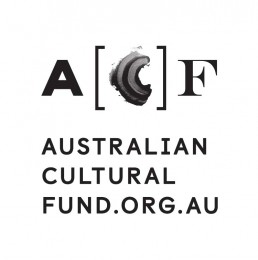

THE TOUR PATRONS
The community of people who are making the art happen!
Charles Grant
Peter Knight
Bill Rigg
Sieglind D’Arcy
Christopher Erickson & Joseph Zoellers
Judith Landsberg
Joan & Barry Miskin
John Meyer
Joseph Casella
Anonymous
Anonymous
Christina Ho
Dianne Beer
Annemarie Rolls
Helen Vorrath
Sarah Livingstone
Anonymous
Spiral Systems PTY LTD
Anne Willox
Amy McLennan
Kitty Taylor
Oliver Mashinini
Anonymous
Bernardine Woolard
Taylem Frost
Stephanie Potter
Georgia Hay
Jess Wright
Justin Kruger
Yurong Yang
THE PLAN
Over November and December I will return to Australia and bring my art home. Together we will premiere three new works, collaborating with the most outstanding talents in Sydney, Melbourne and Perth:
-
-
- A piano trio, to be premiered and presented in Melbourne by Melbourne Chamber Players
- A work for string orchestra, for UNSW String Ensemble in Sydney
- A song cycle, for Mezzo-Soprano Ashlyn Tymms and pianist Raymond Yong
-
Funds raised from this campaign go towards co-commissioning the new pieces (aka a liveable wage for the composer) and travel costs to and within Australia.
Over May and June of this year, a campaign was successfully run to secure all matched funding for the project made available by a special grant from Creative Partnerships Australia before that funding expired (15 June 2021). The success of the first round of public crowd funding and the matched funding has secured two-thirds of the projects costs.
Funds raised from this campaign (round 2) close the remaining gap for co-commissioning the new pieces (1&3) (aka providing a livable wage for the composer to write them) and travel costs to and within Australia. Anything over this means we can take these works to the recording studio!
- Donations through the Australian Cultural Fund are TAX-DEDUCTIBLE for Australian tax residents and businesses.
- Donations through Fiscal Sponsor Fractured Atlas are TAX-DEDUCTIBLE for U.S. tax residents and businesses.
Thank you for your support. Let’s get to work!
M.G.
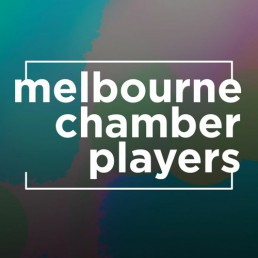
PIANO TRIO
(MELBOURNE, VIC)

PIANO TRIO
(MELBOURNE, VIC)
DATE: 8PM, Sunday December 11, 2021
PRESENTER: Melbourne Chamber Players
PERFORMERS: Natalia Harvey, Anna Pokorny, Aidan Boase.
VENUE: Tempo Rubato, 34 Breese St, Brunswick VIC 3056
TICKETING: https://www.temporubato.com.au/
A Melbourne powerhouse of high quality chamber music, it is an absolute thrill to be writing a piano trio for my supremely gifted colleagues of the Melbourne Chamber Players. The piano trio is one of the most expressive and well established chamber group configurations in western music and I have been hoping to write my own substantive trio for some time. With the fortune to write for such capable performers, I am confident the result will be a moving 12 to 15 minutes of music!
Lauded for their “world class” performances, Melbourne Chamber Players comprises of musicians who have dedicated their lives to performing exceptional chamber music at the highest level. Directed by clarinetist Justin Beere and oboist Steph Dixon, the ensemble is committed to illuminating extraordinary and unique chamber music; championing lesser-known works by important and meaningful composers. To date, the ensemble has enjoyed an active life on stage with numerous performances across Melbourne and regional Victoria, including live recordings for 3MBS Radio.
Meet The Trio
NATALIA HARVEY is earning a reputation as one of Australia’s most versatile and dynamic young violinists, her expertise ranging from historical performance to contemporary music and improvisation. As a soloist she has been a finalist in international and national competitions, including the Gisborne International Music Competition (New Zealand) and the Australian Youth Classical Music Competition.
An Emerging Artist with the Australian Chamber Orchestra in 2017, Natalia is also an active orchestral musician. She is currently Principal Second Violin of the Melbourne Chamber Orchestra and a casual member of the Melbourne Symphony Orchestra. She often appears as a soloist and guest director with the Melbourne Chamber Orchestra in programs broadcast on ABC Classic FM. Natalia’s passion for chamber music has seen her perform chamber works with internationally acclaimed artists such as Anthony Marwood, Malin Broman and Pekka Kuusisto. She is a member of the Australian Octet and is regularly invited as a guest artist with string quartets (her favourite form of chamber music) around the country, such as the Flinders Quartet.
Natalia is a both a keen performer of new music and an experienced period violinist. She has been a recitalist with new music advocates such as Michael Kieran Harvey and the Rubiks Collective. As a period violinist, she was the winner of the Holdsworth Family Bach Prize and is a member of the Australian Brandenburg Orchestra. She often appears in period chamber music ensembles and performs with orchestras such as the Australian Romantic and Classical Orchestra, the Orchestra of the Antipodes and Genesis Baroque. Natalia has been a guest artist at festivals such as the Four Winds Festival (NSW), the Coramba Chamber Music Festival (NSW), the Extended Play Festival (NSW), the Vasse Felix Festival (WA), the Canberra International Music Festival (ACT), and the Musica Viva Huntington Estate Festival (NSW).
ANNA POKORNY is a freelance cellist currently based in Melbourne, Australia. She has the pleasure of performing regularly with the Australian Chamber Orchestra, Orchestra Victoria, Melbourne Symphony Orchestra and Melbourne Chamber Orchestra. Originally from Perth, Western Australia, Anna’s love of classical performance has taken her through studies at the University of Western Australia, Australian National Academy of Music (ANAM) and the International Menuhin Music Academy in Switzerland (under the tutelage of Dr Suzanne Wijsman, Howard Penny and Niall Brown respectively). As a chamber musician Anna has appeared at numerous festivals and concert series around Australia and Internationally including the Adam Chamber Music Festival, Musica Viva Festival, Perth International Arts Festival, Melbourne Recital Centre Local Heroes and Melbourne International Arts Festival.
Melbourne-based pianist Aidan Boase is an Associate Faculty Artist at the Australian National Academy of Music (ANAM), where he has the delightful job of collaborating with and coaching musicians of the Academy. He also performs with Melbourne Chamber Players, the Melbourne Symphony Orchestra and Orchestra Victoria, and is in high demand as a pianist and collaborator. Aidan has performed at festivals in Europe and in the US. He was a 2015 fellow at the prestigious Norfolk Chamber Music Festival run by the Yale School of Music; and was a prize winner in the Virtuoso and Bel Canto Chamber Music Competition in Lucca, Italy. As a concerto soloist Aidan has performed with orchestras around the country, including the Tasmanian Symphony Orchestra and Orchestra Victoria.
Aidan was born in Perth, Western Australia, where he completed a Bachelor of Music with honours at the West Australian Academy of Performing Arts (WAAPA). He had considerable success there studying with Ukranian pianist Anna Sleptsova, receiving the Cecilia Daff piano prize and winning the Warana Concerto Competition three times, enjoying performances with the university orchestra on each occasion. Following his degree Aidan made his first move to Melbourne to train at the Australian National Academy of Music (ANAM), learning with Timothy Young. During his time there he was twice a finalist in the ANAM Concerto Competition and won first prize and the 3MBS Listeners’ Choice award in the Chamber Music Competition. Aidan returned to Perth for two years after his studies to become a member of the piano teaching staff at WAAPA, before moving again to Melbourne to take up the position at ANAM.
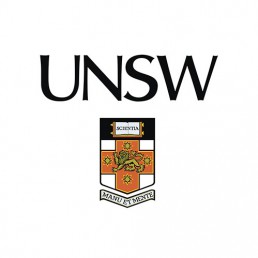
STRING ORCHESTRA
(SYDNEY, NSW)

STRING ORCHESTRA
(SYDNEY, NSW)
DATE: November, 2021 Recorded March, 2022
PRESENTER: University of New South Wales
PERFORMERS: UNSW String Ensemble conducted by Steven Hillinger
VENUE: Due to the ongoing complications of COVID-19, this work was recorded and will be presented virtually in 2022.
In 2020, the University of New South Wales announced that I was the joint-winner of the Willgoss Ensemble Composition Competition and with this came not only a cash prize, but the invitation to write a short work for string orchestra. The work would be performed in November 2021 by the UNSW String Ensemble comprised from the string section of the UNSW Orchestra. The opportunity was an important artistic lifeline line in the height of the pandemic and from it hatched hope, and a plan to return home to attend the premiere and this tour! The work pitched for the ensemble “Affine,” (or “kindred” in English) will explore the nature of ‘connection’, particularly to each other.
Photo: Rachel Aquino
Composing In COVID19: Willgoss Ensemble Composition Prize Winners Michael Grebla and Elizabeth Younan
January 15, 2021
News Article | University of New South Wales | COVID19-permitting, these new works are scheduled to be performed later this year, so we asked…
Willgoss Ensemble Composition Prize to Elizabeth Younan and Michael Grebla
September 3, 2020
Resonate Magazine | News Article | Australian Music Centre | The Music Performance Unit UNSW has announced Elizabeth Younan and Michael Grebla as…
UNSW ANNOUNCES 2020 WILLGOSS ENSEMBLE COMPOSITION PRIZE WINNERS
August 24, 2020
Limelight Australia's Classical Music & Arts Magazine | News Article | Clive Paget | Elizabeth Younan and Michael Grebla have been announced as…
Winners of Willgoss Ensemble Composition Prize 2020 Announced
August 24, 2020
The National Tribune | News Article | UNSW | The Music Performance Unit UNSW is proud to announce Elizabeth Younan and Michael Grebla as joint…
Winners of Willgoss Ensemble Composition Prize 2020 Announced
August 24, 2020
Sydney Arts Guide | News Article | David Kary | The Music Performance Unit UNSW is proud to announce Elizabeth Younan and Michael Grebla as joint…
Winners of Willgoss Ensemble Composition Prize 2020 Announced
August 24, 2020
Mirage News | News Article | The Music Performance Unit UNSW is proud to announce Elizabeth Younan and Michael Grebla as joint winners of the…
Winners of Willgoss Ensemble Composition Prize 2020 Announced
August 23, 2020
University of New South Wales News | News Article | The Music Performance Unit UNSW is proud to announce Elizabeth Younan and Michael Grebla as joint…
Meet The Artists
THE UNSW ORCHESTRA was founded in 1989 to bring the live performance of fine music to the University community and to the many people who live in the surrounding suburbs.
The Orchestra was established by three undergraduate students, Jan Howe, Richard Pulley and Emery Schubert, with guidance from Professor Roger Covell of the (then) School of Music and Music Education and was initially funded by a grant from the (then) Vice Chancellor, Professor Michael Birt. The vitality of the Orchestra today owes much to all these founders’ vision and caring.
The Orchestra’s repertoire is broadly from the Classical (1750-1810) and Romantic (1810-1910) eras. More recent works, especially works by contemporary Australian composers, are well represented in the Orchestra’s programs, as is film music from the past four decades. Concertos for various solo instruments figure prominently. The soloists in these concertos are mostly students from the University’s music department. All musicians are members of UNSW Society of Orchestra and Pipers
The Orchestra’s first concert took place on 15 August 1989, and on 14 May 2010 it gave its 100th public performance. There are, at any one time, about 65 players in the Orchestra. Additional guest players are brought in as the need arises, usually for the rarer instruments such as bass clarinet, contrabassoon, harp and celeste, or when a large-scale symphonic work is on the program.
More than 1000 UNSW students both from UNSW School of the Arts and Media and other faculties, staff and alumni have played in the Orchestra over the first 23 years of its existence. This remarkable figure shows what a wealth of amateur musical talent there is on campus. It also reflects the inevitable annual turnover among players, as existing players go off with their degrees and new players join.
The minimum standard is Grade 8 AMEB.
Photo: Rachel Aquino
STEVEN HILLINGER is a versatile conductor and educator who is widely recognised for his work in both the orchestral and symphonic band fields.
Steven graduated with a Bachelor of Music degree in 1992 from the Sydney Conservatorium of Music studying French Horn with Anthony Buddle and has performed with orchestras including the Australian Chamber Orchestra, The Australian Opera and Ballet Orchestra and the Sydney Philharmonia Orchestra.
In 1993 Steven completed a Graduate Diploma in Conducting at the Sydney Conservatorium, studying with Henryk Pisarek and the following year was offered a place in the Master of Music course, graduating in 1997, with John Hopkins as his teacher. This was the first time a Masters in Conducting had been offered. In 2019, Steven completed his Doctoral studies at the Sydney Conservatorium, studying with Eduardo Diazmuñoz while undertaking research into the forgotten Hungarian composer, Tibor Idrányi.
Steven has guest conducted many orchestras including the Willoughby, Penrith and Mosman Symphony Orchestras, the Ku-ring-gai and East-West Philharmonic Orchestras, the Cove Chamber Orchestra, The Occasional Performing Sinfonia, the Conservatorium Symphony Orchestra and Chamber Orchestra and the NSW Youth Orchestra. Steven has also worked with the Australian Youth Orchestra and was shortlisted to audition for the position of Assistant Conductor of the Sydney Symphony Orchestra. He was a finalist the 1997, 1998 and 2000 Westfield Young Conductor of the Year Awards with the Queensland, Adelaide and Melbourne Symphony Orchestras respectively.
Steven was the conductor of the Lane Cove Youth Orchestra (1998), Fisher’s Ghost Youth Orchestra (1998-2000), Sydney Youth Brass (2000), Shore School Symphony Orchestra (2005-2006), Burwood Girls High School Senior Concert Band (2010-2011), St. Aloysius College Senior Concert Band (2012), Ascham School Symphony Orchestra (1997-2014) and was Musical Director of the City of Sydney Wind Ensemble (2001-2006). Steven also worked extensively with the Sydney Youth Orchestra’s Association (2001-2007), conducting the Sydney Youth Orchestra, Philharmonic Orchestra and Symphonic Wind Orchestra and was Musical Director of the University of New South Wales Wind Symphony (2006-2012) and Associate Conductor of the Sydney Conservatorium of Music’s Wind Symphony (2013-2014). Steven has also worked as Assistant Conductor with the Sydney Symphony Orchestra.
As well as a large amount of guest conducting, at present, Steven holds the position of Chief Conductor and Musical Director of the North Sydney Symphony Orchestra, as well as conducting the Chatswood High School Wind Orchestra, North Sydney Girls High School Symphony Orchestra and Wind Orchestra – leading them on several international tours to Europe and China. Steven is also Musical Director of the University of New South Wales Symphony Orchestra, and from 2016 to 2018, held the position of Chief Conductor of the Melbourne Youth Orchestra.
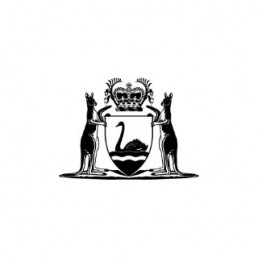
SONG CYCLE
(PERTH, WA)

SONG CYCLE
(PERTH, WA)
DATE: December, 2021 TBC
PERFORMERS: Ashlyn Tymms & Raymond Yong
VENUE: TBC
TICKETING: TBC
Long time collaborators Ashlyn Tymms and Raymond Yong have delighted audiences for years with their sensitive artistry, technical prowess and deep passion for music. With having award winning careers and international experience, working with these two fellow West Australians has been the passion project I’ve dreamed of with for years. Together we will premiere a new song cycle of 12-15 minutes duration written especially for the duo consisting of a several individual movements.
Meet The Artists
ASHLYN TYMMS recently performed with the West Australian Opera as Dorabella in the Glyndebourne Festival production of Così fan tutte. This coming July Ashlyn will make her role debut as Santuzza for WAO Cavalleria Rusticana. In 2020 Ashlyn also performed as Hansel at the WAO production of Hansel and Gretel. Ashlyn has also performed the roles of Flora in La Traviata, Lapák & Mrs Pásková in The Cunning Little Vixen, Lady in waiting in Verdi’s Macbeth as well as singing regionally with the company in the Pinnacles, the Valley of the Giants and Opera in the Quarry.
Ashlyn graduated as a HF Music Scholar at the Royal College of Music, London, Masters of Vocal Performance with Distinction and has been awarded Outstanding Australian Musician Award from the Royal Over-Seas League, London. Ashlyn performed the role of Rosimonda in Handel’s Faramondo at the London Handel Festival. Other roles include Judith, The Two Sisters, premier with Tête à Tête Opera, La Marchande de journaux in Poulenc’s Les mamelles de Tirésias, Euridice in Monteverdi’s L’Orfeo, Title role in Dido and Aeneas, Eurydice in Offenbach’s Orpheus in the Underworld, Berenice in Rossini’s L’occasione fa il ladro.
Ashlyn has performed extensively within Australia, UK and Asia on the concert platform. Of note, Vaughan Williams Serenade to Music at Buckingham Palace hosted by His Royal Highness The Prince of Wales, South Korea tour in recital with the London Cello Orchestra and Verdi’s Requiem, Sydney Town Hall.
RAYMOND YONG is known around Australia as a classical pianist, orchestral conductor and music educator. He has performed in concert with many of Australia’s foremost classical instrumentalists, singers and ensembles, including concerts for Musica Viva Australia, the Melbourne International Festival and piano concerto performances with the Melbourne Symphony, Sydney Symphony, West Australian Symphony and Tasmanian Symphony Orchestras.
Raymond was born in Malaysia, emigrating to Australia at the age of two. He was a pupil of Mark Coughlan at the University of Western Australia, before studying piano and conducting at the University of Melbourne under Stephen McIntyre and John Hopkins. A German government scholarship brought him to Hannover, where he undertook three years of intensive piano performance training under Karl-Heinz Kämmerling at the University of Music and Theater in Hannover.
Now based in his home city of Perth, Raymond recently completed doctoral research investigating techniques for reducing the risk of injuries in pianists, applying this knowledge to performance training at the University of Western Australia and the West Australian Academy of Performing Arts.
Portraits of UWA
PORTRAITS OF UWA OVERVIEW
Portraits of The University of Western Australia was a concert and photographic exhibit that presented a series of musical portraits of various aspects of the University and university life from throughout my time as an undergraduate.
The event was held on November 2, 2014 at The Hackett Dining Hall, St George’s College welcoming a capacity audience of over 200 members of the public including the University Chancellor Michael Chaney and Emeritus Chancellor Alex Cohen. The photographs from the exhibit remain on display throughout the building of St George’s College on the University of Western Australia’s Crawley Campus. This exhibition was sponsored by Perth Pro Lab and St George’s College.
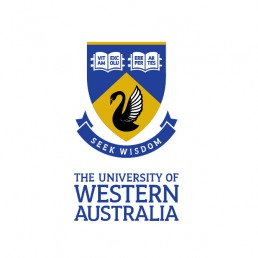
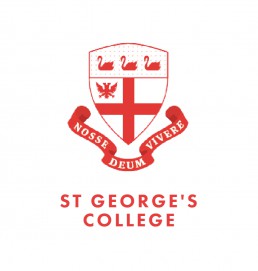

RATIONALE
Portraits of UWA’ is a creative project I decided to undertake for my honours recital in composition under the extensive supervision of Dr. Christopher Tonkin. The project explored various aspects of my interactions with The University of Western Australia. This includes the architecture, culture, grounds, and wildlife through a collection of musical works and accompanying photographic exhibits.
Oddly enough, the idea for this project came about when contemplating a potential topic for my engineering research thesis in acoustics. My engineering supervisor challenged me to create a method or program that could be used to change an image into a piece of music, and a piece of music into an image. Having arrived late for lunch one afternoon, I was left eating on my own in the dining hall, and with the challenge fresh in my mind I stared at the portrait of Sir John Winthrop Hackett above the fireplace and thought, “how could I make this painting into a piece of music?” The problem proved beyond my comprehension as an engineer, and though it did not eventuate into an engineering research project, it proved an interesting challenge for a composer. This triggered the broader idea for creating a series of musical and photographic portraits in the spirit of the University’s recent centenary.
The six portraits in the suite represent my experience and interactions with various aspects of the University over the course of my eight years as a student since 2007. The suite can roughly be divided into three sets; two works for solo cello concerning still and moving water features of the Crawley campus; two works for solo piano exploring the connection between the old and historic, and the young and dynamic; and two works for string orchestra and soloist about birds native to the campus. Unlike the two sets for cello and piano, the set of works for string orchestra and soloist share no musical or metaphoric relation.
The set of accompanying photographic portraits were taken at the Crawley campus of the University in the spring of 2014. Each photographic portrait was taken during the composition of each musical portrait. This allowed a large amount of creative exchange between photographic and musical composition; aspects of the music could influence the composition of the photograph, and some photographic phenomena (such as long exposure photography) would make clear possibilities for musical exploitation. In this sense, the music and photographs may be considered as two interdependent and complementary halves of an artistic experience. For this reason, the photographic and musical portraits are intended to be experienced simultaneously.
I. THE MORETON BAY FIG
SOLO PIANO
I recall arriving at University as a freshman every morning at 7:30am for my 8:00am mathematics lectures. I always enjoyed the walk from the University bus stop to the Alexander lecture theatre in Arts, though most particularly I enjoyed the way the morning sun would light up the Moreton Bay fig tree as I passed under its branches. It was by far one of the largest and most expansive trees I had ever seen. I was fascinated by the vastness of its branches and how each branch would divide in two so clearly. Every morning as I walked under the tree, it would occur to me how many generations of busy young students have passed under this tree and how many future generations will also pass under this tree which appears stationary yet grows ever so slowly.
‘The Moreton Bay Fig’ was written as the first movement in a set of two piano portraits. This work is the static, slow-growing counterpoint to ‘Youth,‘ the chaotic and energetic second movement. ‘The Moreton Bay Fig‘ borrows from the melodic material of ‘Youth‘ while also using the idea of ‘branching’ as a governing mechanism for organic growth, progression and form. From each melodic branch shoots another, and another and so on until the work reaches a critical number of branches such that no individual melodic line is discernible amongst the vast amount of overlapping. Eventually, these branches terminate in leaves which fall from the tree. This is represented musically by a tripleted figure which slowly dissolves the dense melodic texture.
II. YOUTH
SOLO PIANO
“Youth” was commissioned by St George’s College and first performed by Adam Pinto to celebrate the acquisition of the College’s Fazioli concert grand piano, and the commencement of the College’s concert series in 2013. As youth is the central focus of the St George’s College Concert Series, I thought it fitting to compose a musical tribute to it. The piece embodies the same hope, excitement and optimism associated with youth that underscored the commencement and future of the concert series.
My secondary objective was to write a work that would demonstrate the unique capabilities and features of the piano. Faziolis are renowned for their crisp touch, rich resonance, tone and long sustain. Youth specifically exploits these resources.
Though the substance of this work predates the conception of the “Portraits of UWA“ suite, it is in essence a musical portrait of the bright young student minds at the University and has since been revised. ‘Youth’ is an abrupt musical contrast to the ‘The Moreton Bay Fig’. The work is driven forward by a perpetuum mobile, a rapid ticking fabric of clustered notes from which melodic fragments increasingly stated plainly and with confidence (though also flippantly at times). Tripleted material is borrowed from the first movement later during the work, alluding to a metaphoric connection between the fabrics of the University and constitution of its students.
III. THE ORBICULAR GRANITOID FOUNTAIN
SOLO CELLO
The Orbicular Granitoid Fountain is located between the University’s Computer Science and Geology buildings and is made of orbicular granitoid rock sourced from Mount Magnet in Western Australia, where it occurs in a small area on Boogardie Station. It consists of a large spinning orb of granite suspended on a bed of water.
The work ‘Orbicular Granitoid Fountain’ emulates my own interaction with the orb, casting attention to different aspects of the orb’s behaviour and beauty. The orb is always in motion, glittering with a thin reflective film of water atop the polished stone. Similarly, the rhythm of the cello is fast-moving and relatively constant. Interactions with the orb such as touching it may cause it to slow down, speed up, stop, or change direction. This interruption of momentum is translated musically through the augmentation of tempo. Variations in surface texture and colour in the granite dictate the harmonic colours of the work.
Furthermore, if you observe a single point on the orb you can see the veins of granite change from light to dark, interspersed with large drops of glittering silver ore. As the work progresses, more attention is given to the colours of the reflections in the thin film of water atop the granite. These reflections are linked to the natural harmonics of the cello due to their sharp and shimmering sound. Eventually, even the motion of the orb is ignored, and attention is given only to the reflections as you try to touch the sky and watch the water crest around your finger.
IV. THE REFLECTION POND
SOLO CELLO
“The Reflection Pond“ provides a very static contrast to the turbulent “Orbicular Granitoid Fountain.“ Naturally reflections are much more prominent in the pond than in the orb fountain as the water is less turbulent. The beauty of the pond lies not just in the quality of its reflections, but in how susceptible these reflections are to disturbances in the water’s surface. It is possible to watch a disturbance such as a pebble or duck landing create ripples which spread to the edge of the pond, reflect inward and so on until they vanish. In effect, the water experiences multiple instances of reflection: the reflection of light from its surface and also the effect of waves and disturbances reflected within the pond.
I found these ideas of reflection to be an interesting premise for exploration on the cello. The work relies entirely on the open strings of the cello and natural harmonics of each string, that is the string is forced to vibrate in different ways without the length of the string being changed. Musically the reflection of light from water is likened to different modes of vibrations or natural harmonics acting atop an open string, just as we see both the water, and a reflection in the water. The cellist then alternates between open strings and harmonics at varying speeds during the piece, just as ripples of varying magnitude move through the water, occasionally even obscuring the reflection.
Reflection also underpins the form of the piece. The work starts at the bottom of the cello, close to the bridge on its highest string and over time progresses across the four strings to the lowest string. The bottom C string then acts as a point of reflection as the cellist jumps to the other end of the instrument and works their way back up to the top A string. Similarly, the dynamics take their cue from the varying intensity of the sun arching over the pond during the day, creating soft reflections in the early morning, hard reflections by midday and soft reflections again in evening.
V. ELEGY FOR A DUCK
SOLO BASS CLARINET & STRINGS
I have always considered wildlife to be a large component of the University’s aesthetic appeal and charm. The presence of ducks in Crawley predates the foundation of the University and colonisation of Western Australia.
‘Elegy for a Duck’ recounts the profound feeling of disappointment, sadness and shame I experienced witnessing the death of a campus duck. It was early on a winter afternoon and as I stepped out for a run, I noticed a duck sitting on the side of Mounts Bay Road. I thought it an odd place for a duck to sit and took a closer look. The faint trail of blood stretching from the roadside and the duck’s very visible short breathing made it clear that it was injured. It didn’t appear particularly panicked, and was likely unable to comprehend that its wing had been clipped by a car. A colleague and I secured the duck for transport and made our way to the emergency vet clinic. As we made our way to the clinic, the duck’s breathing changed. It would breathe faster and deeper with increasing desperation, followed by increasingly extended periods of breathless silence.
My colleague, a medical student, explained that the duck was exhibiting ‘Cheyne-Stokes respiration,’ a cycle of breathing symptomatic of a terminal condition. I’d realised I had witnessed this process before. As the silence between breaths grew longer, I would wait anxiously for the next breath, not knowing if it was to be the last. The duck took its final breath in my lap two minutes from the clinic. Its passing stirred a chilling realisation: while this might be the first duck I had seen die as a result of our way of life, it was not the first, and it likely will not be the last.
‘Elegy for a Duck’ is a very literal representation of this experience. The bass clarinettist musically mimics the duck as it begins to exhibit Cheyne-Stokes respiration, taking increasingly exaggerated breaths between increasingly desperate melodic gestures. Large gaps of breathless silence between phrases are narrated by a simple string accompaniment echoing my own feelings of fright and despair on the drive to the vet.
VI. ANDREW THE PEACOCK
SOLO VIOLIN & STRINGS
‘Andrew’ was the name of one of the original peacocks to colonise the Arts Faculty building in the ‘70s. Sadly, after some thirty years, Andrew passed away. Fortunately his legacy still lives on with Alistair the peacock featured in the image above, and I wrote this work to pay tribute to this unique UWA presence.
Generally speaking, I find peacocks are funny creatures. I recall hearing loud ‘meow’ like sounds in my morning maths lectures in Alexander Lecture Theatre in first year. I thought it odd that there were so many loud cat-like calls, yet I had not seen any cats in the area. It would take several weeks before I would realise the sounds were actually from peacocks. They would remain hidden for most of the early morning, contently perched on the rails of the New Fortune Theatre interrupting lecturers with their calls.
Having had more time to become better acquainted, I noticed some very interesting qualities of the peacock that lend to musical possibilities. When the peacocks are not flaunting their feathers, they are not impressive. I would even go as far as to say that they appear quite unprepossessing and a little bit awkward.
Strutting one foot at a time- pause-head turns left – then right – then forward- then right, then another step. We see a very different side to the peacock, however, when it fan its feathers, suddenly it becomes a beautiful majestic creature, its movements appear far more fluid and a loud array of sharply contrasting feathers catch the eye of passers.
Musically, I understand the peacock to be a creature which oscillates between either ‘avirtuosic’ or ‘virtuosic’ behaviour. Many of these avirtuosic traits occur in the first section of “Andrew the Peacock.“ Jerky staccato rhythms, plucked strings, apparently random pitches and abrupt silences create a general air of unremarkable awkwardness as Andrew struts along. As the piece progresses, we see more and more of the peacock’s virtuosity. As his feathers fan and shake, the violinist exhibits a variety of virtuosic and lush gestures as it moves through an ear catching variety of sharply contrasting harmonic and stylistic worlds with the orchestra. The work is interspersed with flamboyant impromptu cadenzas in which the behaviour of the violin can be described in no way other than shamelessly ‘peacocking.‘
THE ARTISTS
STRING ORCHESTRA
CONDUCTOR
Raymond Yong
VIOLIN I
Jasmin Parkinson- Stewart
Julia Nicholls
Louise May
VIOLIN II
Sarah Pappa
Marissa Loh
VIOLA
Eunise Cheng
Theo Triantos
CELLO
Osborn Fong
Olivia Thorne
DOUBLE BASS
Ebony Lim
SOLOISTS
BASS CLARINET
Ashley Smith
PIANO
Adam Pinto
VIOLIN
Paul Wright
CELLO
Jeremy Huynh
PHOTOGRAPHY
PHOTOGRAPHER
Michael Grebla
PHOTOGRAPHY ASSISTANT
Justin Kruger
EDITING ASSISTANT
Jeremy Ansell
PRINTING
Paul Jarvis & Perth Pro Lab




